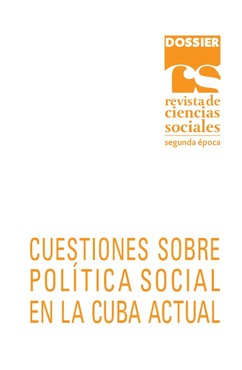La atención a la discapacidad en Cuba : retos y oportunidades en un proceso de transformaciones

Ver/
Fecha
2018-04Autor
Díaz Pérez, DanayResumen
La atención a las personas con discapacidad en Cuba ha sido una de las prioridades del sistema socialista. Su integración social se ha concebido desde la propia política de país, en articulación con las organizaciones de la sociedad civil que representan este grupo. A mediados de la década de 1990, en pleno período de crisis económica, se creaba en Cuba el Primer Plan de Acción Nacional para la Atención de Personas con Discapacidad con una frecuencia quinquenal. Este se constituye a partir de áreas estratégicas de intervención con sus respectivos programas, que favorecen la participación de estas personas en los ámbitos de la vida cotidiana (familia, educación, salud, empleo, cultura, deporte, recreación). A inicios de 2008, el país iniciaba un período de reformas y transformaciones socioeconómicas que ha planteado nuevos desafíos en la atención a la discapacidad. Uno de los ámbitos donde más exclusión experimentan las personas con discapacidad es el laboral, con desafíos mayores para su acceso a sectores no estatales (cuentapropismo y cooperativismo). La política social hacia este grupo poblacional, para nada homogéneo, debe contemplar los impactos de la actualización del modelo económico en su inclusión social. The attention to people with disabilities in Cuba has been one of the priorities of the socialist system. Its social integration has been conceived from the country’s own policy, in coordination with the civil society organizations that represent this group. In the mid-1990s, during the period of economic crisis, the First National Plan of Action for the Care of Persons with Disabilities was created in Cuba with a five-year frequency. They are constituted of strategic areas of intervention with their respective programs that favor the participation of these people in the areas of daily life (family, education, health, employment, culture, sports, recreation). At the beginning of 2008, the country began a period of reforms and socio-economic transformations that has posed new challenges in the attention to disability. One of the areas where people with disabilities are more excluded is the labor market, with greater challenges for their access to non-state sectors (self-employment and cooperativism). The social policy towards this population group, not at all homogeneous, must contemplate the impacts of the updating of the economic model in its social inclusion.
